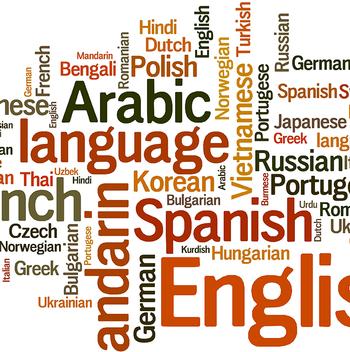Defining Translanguaging
Translanguaging is a linguistic practice, a pedagogy, and a theory of language: it describes the practice of dynamic bi/multilingual languaging to make sense of the world and the word; a pedagogy for strategically designing instruction and assessment that leverages the linguistic assets bi/multilingual students; and is a theoretical understanding of bi/multilingualism that puts speakers at the center rather than languages. While a popular term, translanguaging is more than a buzzword—it’s a way of seeing, hearing, and honoring the full and dynamic language practices of bi/multilingual individuals and a means to bring this understanding to instructional design and pedagogical beliefs. Translanguaging theory challenges the idea that languages should be (or are) kept separate and, instead, embraces the rich, fluid ways people use language and multimodal resources to make meaning, connect, and learn. It also communicates a commitment to teaching and learning with social and linguistic justice.

It’s how the bilingual brain works.
Translanguaging scholars argue that the bilingual brain doesn’t operate monolingually (e.g., in “English” or “Spanish” mode). Rather, the bilingual brain is seen as a holistic repertoire of language features that can be leveraged as needed for different purposes, audiences, and contexts.

It’s how bilingual people communicate.
The term translanguaging also describes the flexible language practices of bilingual people and communities. As Ofelia García (2009) put it, translanguaging is the “multiple discursive practices in which bilinguals engage in order to make sense of their bilingual worlds” (p. 45). Li Wei (2018) elaborated further that translanguaging is the “multilingual, multisemiotic, multisensory, and multimodal resource that human beings use for thinking and for communicating thought” (p. 26).

It’s about justice.
When schools value only one language or perceive language “mixing” as problematic, they send a message that other ways of speaking and being don’t belong. Translanguaging is a pedagogy of resistance, affirmation, and inclusion. From disability justice to racial equity, translanguaging intersects with broader struggles for educational access and dignity.
Recommended Resources for Further Learning about Translanguaging
- Baker, C. (2011). Foundations of bilingual education and bilingualism. Multilingual matters.
- García, O. (2009). Bilingual education in the 21st century: A global perspective. Wiley-Blackwell.
- García, O., Flores, N., Seltzer, K., Li, W., Otheguy, R. & Rosa, J. (2021) Rejecting abyssal thinking in the language and education of racialized bilinguals: A manifesto, Critical Inquiry in Language Studies, 18(3), 203-228, DOI: 10.1080/15427587.2021.1935957
- García, O. & Li, W. (2014). Translanguaging: Language, bilingualism, and education. Palgrave MacMillan.
- Hamman-Ortiz, L., Dougherty, C., Tian, Z., Palmer, D., & Poza, L. (2025). Translanguaging at school: A systematic review of US PK-12 translanguaging research. System, 129, 103594
- Li, W. (2018). Translanguaging as a practical theory of language. Applied Linguistics, 39(1), 9–30.
- Otheguy, R., García, O., & Reid, W. (2015). Clarifying translanguaging and deconstructing named languages: A perspective from linguistics. Applied Linguistics Review, 6(3), 281–307.
- Tian, Z., & King, N. (Eds.) (2023). Developing translanguaging repertoires in critical teacher education. Critical Approaches in Applied Linguistics, De Gruyter Mouton.
